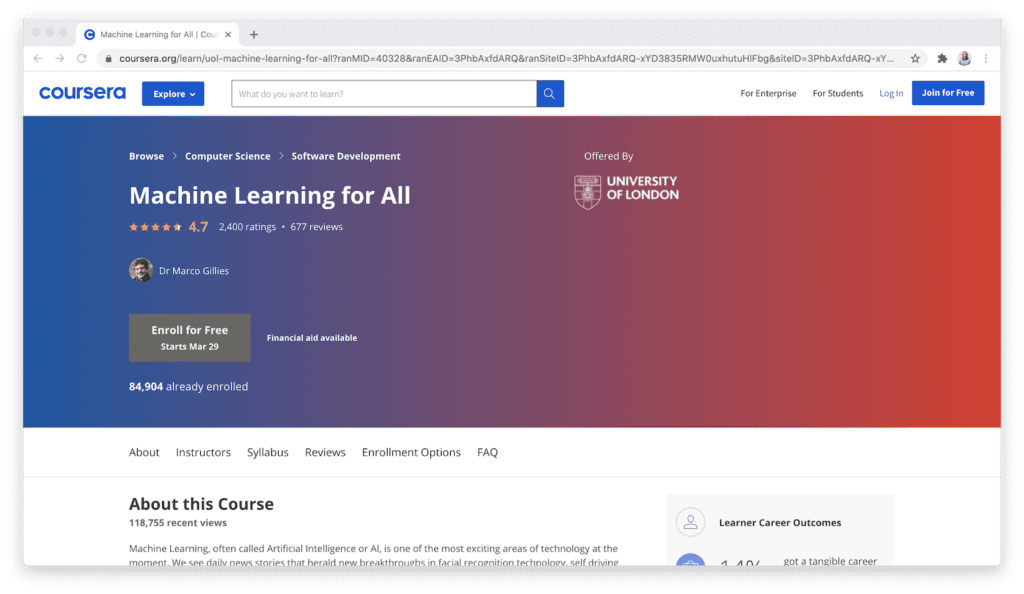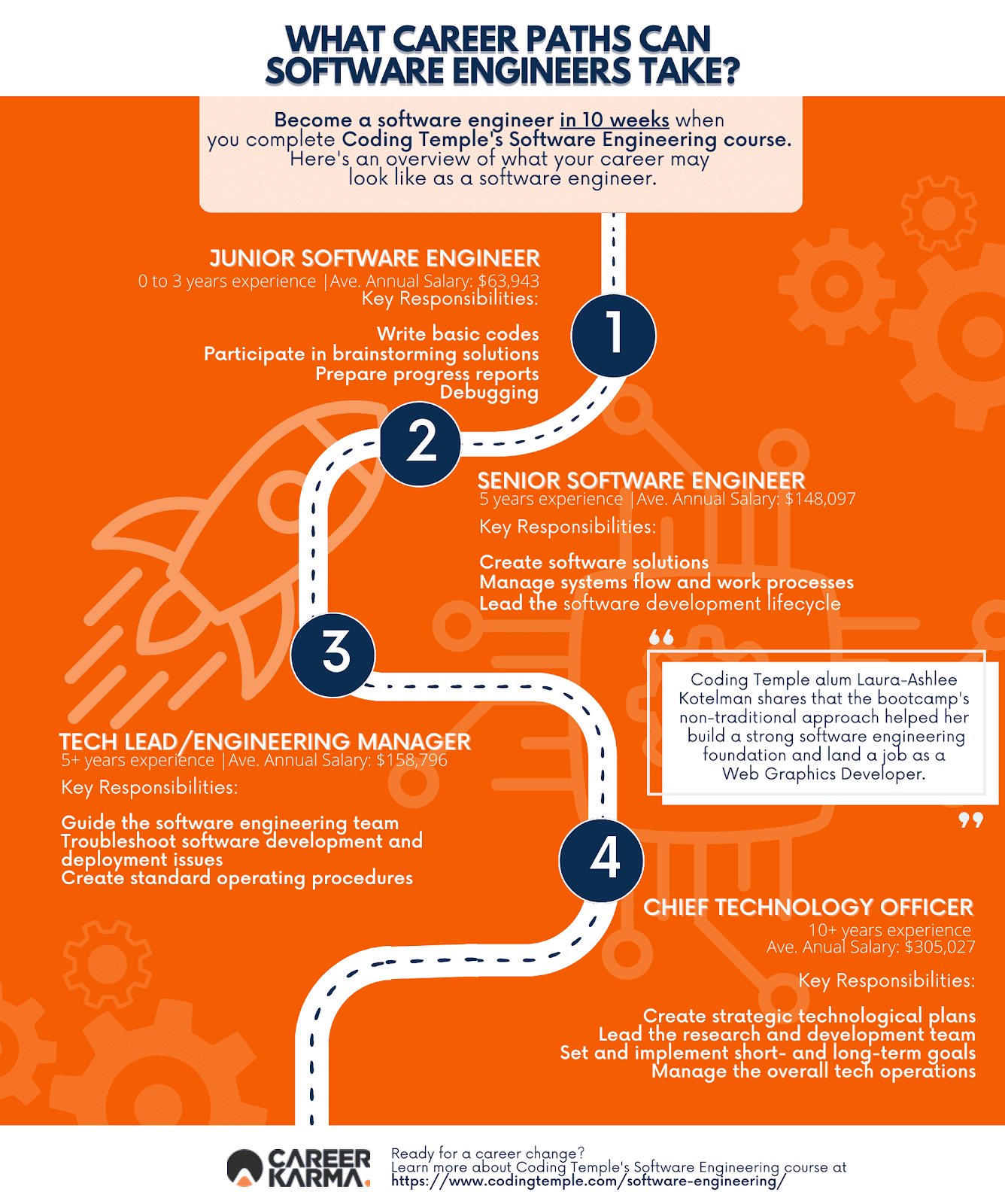All Categories
Featured
Table of Contents
- – Facts About Machine Learning Course Uncovered
- – 6 Easy Facts About Aws Machine Learning Engine...
- – All about Machine Learning Developer
- – What Is A Machine Learning Engineer (Ml Engin...
- – The Definitive Guide to Aws Certified Machin...
- – A Biased View of Software Developer (Ai/ml) ...
- – Some Ideas on Aws Machine Learning Engineer ...
Some individuals assume that that's cheating. Well, that's my whole profession. If someone else did it, I'm mosting likely to use what that person did. The lesson is placing that apart. I'm forcing myself to assume via the possible remedies. It's more concerning taking in the material and attempting to apply those ideas and much less concerning discovering a collection that does the work or finding somebody else that coded it.
Dig a little deeper in the mathematics at the start, simply so I can build that foundation. Santiago: Finally, lesson number seven. This is a quote. It states "You have to comprehend every detail of an algorithm if you desire to utilize it." And afterwards I state, "I think this is bullshit suggestions." I do not think that you have to understand the nuts and screws of every formula before you utilize it.
I've been using semantic networks for the lengthiest time. I do have a sense of just how the slope descent works. I can not discuss it to you right now. I would have to go and inspect back to in fact obtain a far better instinct. That does not mean that I can not fix things utilizing neural networks? (29:05) Santiago: Attempting to require people to believe "Well, you're not going to be successful unless you can discuss every single information of just how this works." It returns to our sorting example I believe that's just bullshit guidance.
As an engineer, I have actually functioned on many, several systems and I've made use of numerous, numerous points that I do not comprehend the nuts and bolts of how it functions, even though I comprehend the effect that they have. That's the last lesson on that particular thread. Alexey: The funny thing is when I consider all these collections like Scikit-Learn the formulas they use inside to implement, as an example, logistic regression or another thing, are not the very same as the formulas we study in artificial intelligence classes.
Facts About Machine Learning Course Uncovered
Also if we tried to learn to obtain all these basics of maker learning, at the end, the algorithms that these libraries make use of are different. Santiago: Yeah, definitely. I believe we need a great deal extra pragmatism in the market.

Incidentally, there are 2 different paths. I generally speak to those that intend to work in the industry that intend to have their influence there. There is a path for researchers and that is entirely various. I do not attempt to discuss that due to the fact that I don't know.
But right there outside, in the sector, pragmatism goes a lengthy means for certain. (32:13) Alexey: We had a comment that said "Feels even more like inspirational speech than speaking about transitioning." So perhaps we must switch over. (32:40) Santiago: There you go, yeah. (32:48) Alexey: It is a good inspirational speech.
6 Easy Facts About Aws Machine Learning Engineer Nanodegree Shown
Among the important things I intended to ask you. I am taking a note to discuss coming to be better at coding. First, let's cover a pair of things. (32:50) Alexey: Allow's start with core devices and frameworks that you need to find out to in fact change. Let's say I am a software engineer.
I recognize Java. I know SQL. I understand exactly how to use Git. I recognize Bash. Possibly I know Docker. All these things. And I find out about artificial intelligence, it looks like an awesome thing. What are the core devices and frameworks? Yes, I saw this video clip and I obtain persuaded that I do not need to obtain deep right into mathematics.
Santiago: Yeah, definitely. I believe, number one, you ought to start discovering a little bit of Python. Because you currently understand Java, I don't believe it's going to be a massive shift for you.
Not due to the fact that Python is the exact same as Java, however in a week, you're gon na get a great deal of the distinctions there. Santiago: After that you get particular core devices that are going to be utilized throughout your whole profession.
All about Machine Learning Developer
That's a library on Pandas for information manipulation. And Matplotlib and Seaborn and Plotly. Those three, or one of those three, for charting and showing graphics. You obtain SciKit Learn for the collection of machine knowing algorithms. Those are devices that you're going to have to be making use of. I do not suggest simply going and finding out about them unexpectedly.
We can speak concerning details training courses later. Take one of those training courses that are going to start presenting you to some problems and to some core ideas of artificial intelligence. Santiago: There is a training course in Kaggle which is an introduction. I don't keep in mind the name, however if you most likely to Kaggle, they have tutorials there absolutely free.
What's excellent concerning it is that the only demand for you is to know Python. They're going to offer an issue and tell you just how to utilize choice trees to address that details issue. I believe that process is incredibly effective, because you go from no equipment discovering background, to understanding what the issue is and why you can not address it with what you recognize today, which is straight software program engineering techniques.
What Is A Machine Learning Engineer (Ml Engineer)? - The Facts
On the various other hand, ML designers focus on building and releasing artificial intelligence designs. They focus on training designs with information to make predictions or automate tasks. While there is overlap, AI engineers deal with more varied AI applications, while ML engineers have a narrower concentrate on artificial intelligence algorithms and their functional execution.

Artificial intelligence engineers concentrate on creating and deploying artificial intelligence designs right into production systems. They function on design, making certain models are scalable, effective, and integrated right into applications. On the various other hand, information researchers have a broader duty that includes data collection, cleaning, exploration, and structure versions. They are usually in charge of drawing out understandings and making data-driven decisions.
As organizations significantly adopt AI and device discovering technologies, the need for proficient professionals expands. Machine understanding designers function on cutting-edge projects, contribute to technology, and have affordable incomes.
ML is fundamentally different from standard software growth as it concentrates on mentor computer systems to pick up from data, rather than shows explicit guidelines that are carried out methodically. Uncertainty of end results: You are most likely made use of to creating code with foreseeable results, whether your feature runs when or a thousand times. In ML, however, the end results are less particular.

Pre-training and fine-tuning: Exactly how these models are educated on substantial datasets and after that fine-tuned for specific tasks. Applications of LLMs: Such as message generation, view analysis and details search and access.
The Definitive Guide to Aws Certified Machine Learning Engineer – Associate
The capability to take care of codebases, merge adjustments, and settle conflicts is equally as crucial in ML growth as it remains in conventional software program tasks. The abilities developed in debugging and screening software program applications are highly transferable. While the context could alter from debugging application reasoning to identifying issues in data handling or design training the underlying concepts of organized examination, hypothesis testing, and iterative refinement coincide.
Machine knowing, at its core, is heavily dependent on stats and likelihood theory. These are essential for understanding exactly how formulas discover from information, make forecasts, and examine their performance.
For those thinking about LLMs, a thorough understanding of deep understanding designs is beneficial. This consists of not only the auto mechanics of neural networks yet also the style of specific models for various usage cases, like CNNs (Convolutional Neural Networks) for picture handling and RNNs (Recurrent Neural Networks) and transformers for consecutive data and natural language handling.
You ought to recognize these issues and discover strategies for identifying, mitigating, and communicating about bias in ML models. This includes the potential impact of automated choices and the honest effects. Many models, specifically LLMs, require considerable computational resources that are commonly provided by cloud systems like AWS, Google Cloud, and Azure.
Building these skills will certainly not just promote an effective shift right into ML however additionally guarantee that programmers can contribute properly and sensibly to the improvement of this dynamic area. Theory is necessary, but nothing defeats hands-on experience. Begin dealing with projects that permit you to apply what you have actually discovered in a functional context.
Take part in competitions: Join platforms like Kaggle to take part in NLP competitions. Develop your jobs: Beginning with straightforward applications, such as a chatbot or a text summarization device, and progressively increase complexity. The field of ML and LLMs is swiftly progressing, with new developments and modern technologies emerging on a regular basis. Staying updated with the most current research and fads is vital.
A Biased View of Software Developer (Ai/ml) Courses - Career Path
Contribute to open-source projects or compose blog articles regarding your learning trip and tasks. As you get know-how, begin looking for chances to integrate ML and LLMs into your job, or seek brand-new functions focused on these modern technologies.

Prospective use instances in interactive software application, such as referral systems and automated decision-making. Comprehending unpredictability, basic statistical procedures, and possibility distributions. Vectors, matrices, and their role in ML algorithms. Error reduction methods and gradient descent discussed merely. Terms like version, dataset, attributes, tags, training, inference, and recognition. Data collection, preprocessing strategies, model training, assessment processes, and implementation considerations.
Choice Trees and Random Forests: Intuitive and interpretable models. Matching issue types with suitable versions. Feedforward Networks, Convolutional Neural Networks (CNNs), Frequent Neural Networks (RNNs).
Data flow, improvement, and attribute design methods. Scalability concepts and performance optimization. API-driven techniques and microservices assimilation. Latency administration, scalability, and variation control. Continual Integration/Continuous Implementation (CI/CD) for ML process. Design surveillance, versioning, and efficiency tracking. Finding and addressing modifications in design efficiency in time. Attending to performance bottlenecks and source monitoring.
Some Ideas on Aws Machine Learning Engineer Nanodegree You Should Know

You'll be introduced to 3 of the most appropriate components of the AI/ML technique; managed understanding, neural networks, and deep understanding. You'll realize the distinctions in between typical shows and device knowing by hands-on development in monitored learning prior to constructing out complicated dispersed applications with neural networks.
This program serves as a guide to equipment lear ... Program Much more.
Table of Contents
- – Facts About Machine Learning Course Uncovered
- – 6 Easy Facts About Aws Machine Learning Engine...
- – All about Machine Learning Developer
- – What Is A Machine Learning Engineer (Ml Engin...
- – The Definitive Guide to Aws Certified Machin...
- – A Biased View of Software Developer (Ai/ml) ...
- – Some Ideas on Aws Machine Learning Engineer ...
Latest Posts
The Best Free Coursera Courses For Technical Interview Preparation
Why Whiteboarding Interviews Are Important – And How To Ace Them
The Best Online Platforms For Faang Software Engineer Interview Preparation
More
Latest Posts
The Best Free Coursera Courses For Technical Interview Preparation
Why Whiteboarding Interviews Are Important – And How To Ace Them
The Best Online Platforms For Faang Software Engineer Interview Preparation